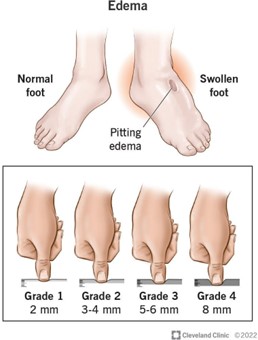MK is admited with COPD exacerbation. Your nursing care plan reads Impaired Gas Exchange, related to smoking 1 PPD of cigaretes. AED pursed lip breathing shortness of breath. Which is the best expected outcome for this diagnosis.
Patient will exchange cigaretes for vaping in 5 days
Patient will stop smoking cigaretes within 7 days
Patient will smoke only a few cigaretes each day
Patient will not smoke cigaretes while wearing oxygen
The Correct Answer is D
This outcome is the most appropriate because smoking can worsen COPD and lead to further respiratory complications, while oxygen is often used to help patients with COPD breathe more easily. Smoking while wearing oxygen can be very dangerous and increases the risk of fire and explosion. Therefore, the best expected outcome is for the patient to completely avoid smoking while wearing oxygen.
Option a is not a recommended solution since vaping may also worsen COPD symptoms and there is limited evidence of its safety in people with respiratory conditions. Option b is a good outcome, but it may not be achievable in such a short time frame. Option c is not an ideal outcome as even a few cigaretes can cause harm to the respiratory system, exacerbate symptoms, and slow down the healing process.
Nursing Test Bank
Naxlex Comprehensive Predictor Exams
Related Questions
Correct Answer is B
Explanation
Hyponatremia is a condition where the sodium levels in the blood are abnormally low. It can cause confusion, seizures, and even coma in severe cases. The IV fluids hanging are 0.33% NaCI, which means they have a low sodium concentration, and may be contributing to the patient's hyponatremia.
Given that the patient is becoming increasingly confused, it is important to assess his mental status and monitor him closely to prevent harm. However, restraining the patient should not be the first course of action. Instead, the nurse should focus on identifying the underlying cause of the hyponatremia and taking appropriate steps to address it.
Therefore, the next step would be to get an order for additional lab work to assess the patient's electrolyte levels and identify the cause of the hyponatremia. This will help to guide further treatment and management decisions for the patient.

Correct Answer is B
Explanation
. Assess your patient’s lower extremities and lungs for fluid retention.
If a patient’s intake is 2500ml and her output is 1200ml from a catheter bag, and you are concerned that she may not be excreting enough urine for the amount of water she is taking in, the most appropriate next step would be to assess her lower extremities and lungs for fluid retention. This can help determine if the patient is retaining water and if further intervention is necessary.

Whether you are a student looking to ace your exams or a practicing nurse seeking to enhance your expertise , our nursing education contents will empower you with the confidence and competence to make a difference in the lives of patients and become a respected leader in the healthcare field.
Visit Naxlex, invest in your future and unlock endless possibilities with our unparalleled nursing education contents today
Report Wrong Answer on the Current Question
Do you disagree with the answer? If yes, what is your expected answer? Explain.
Kindly be descriptive with the issue you are facing.
